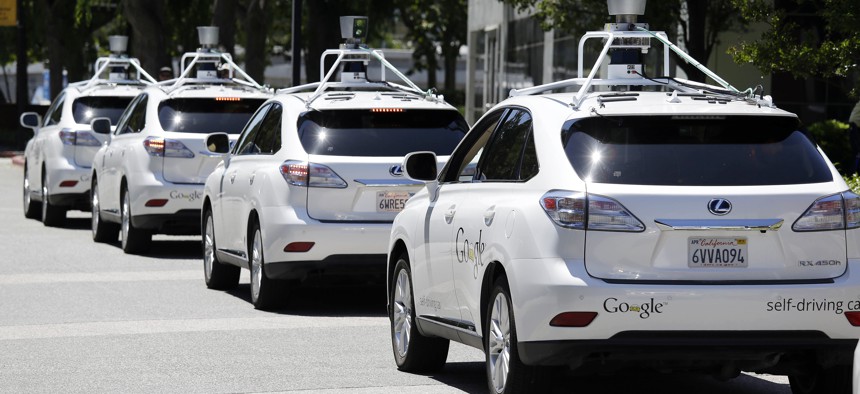US Senate Bill Tells Humans to Take a Back Seat: Self-Driving Cars Don’t Need Steering Wheels

Eric Risberg/AP File Photo
The US is hurtling toward a critical decision about autonomous vehicles.
There is a battle going on in the halls of US congress about self-driving cars: to trust humans, or not to trust them. Less trusting legislators have seized the upper hand.
On Oct. 4, the U.S. Senate Commerce Committee unanimously approved a bill allowing self-driving cars to be sold without steering wheels or human controls, and prevent states from restricting such technology, reports Reuters. Before it becomes law, the final legislation must go to the full Senate and be reconciled with a similar bill passed by the U.S. House last month.
The US is hurtling toward a critical decision about autonomous vehicles. The technology has advanced rapidly, and vehicles capable of driving themselves in most conditions are already on they rode. They are making taxi stops in Pittsburgh, beer runs in Colorado, and entering the lineup of every major car company. To demonstrate the technology, Tesla has plans to have a Model S drive itself from New York to Los Angeles by the end of 2018.
Even as automakers make technical strides toward full autonomy, known as Level 4 or 5 capabilities according to the National Highway Traffic Safety Administration (NHSTA), they lack clarity on the technology’s legality. General Motors, Alphabet (parent company of Waymo), and Ford have all clamored for federal legislation to give guidance that would preempt a mess of conflicting state laws.
Car companies may finally get it. At the heart of the debate is whether to let humans take over control of vehicles from computers. The federal government has already cautiously acknowledged that, ultimately, machines are likely to be far safer than humans on the road (94% of serious car crashes in the US are due to human error, killing out 30,000 people each year). Exactly when they will achieve that safety milestone, however, remains controversial. Taking away the steering wheel seems drastic, but researchers (and some senators) argue allowing humans to take control actually makes self-driving cars more dangerous.
This “handoff problem” ranks among the trickiest obstacles in autonomous driving. In driver tests, transferring controls from computers to humans can take an average of three to seven seconds, according to Audi, far too long in an emergency. That’s prompted some carmakers to skip so-called Level 3 capabilities, where humans must take over in some situations, to strive for full autonomy, says Ken Washington, Ford’s VP of research and advanced engineering, in Wired.“Right now, there’s no good answer, which is why we’re kind of avoiding that space,” he said.
As written, the bill lets NHTSA issue exemptions from federal safety requirements, and instructs the agency to decide on requests within six months. Each manufacturer may sell up to 15,000 self-driving vehicles and up to 80,000 after three years if they can show they demonstrate similar safety records to current vehicles. The cap would be lifted after four years. The legislation applies to all vehicles except commercial trucks over 10,000 pounds, which were excluded over Democratic objections.





